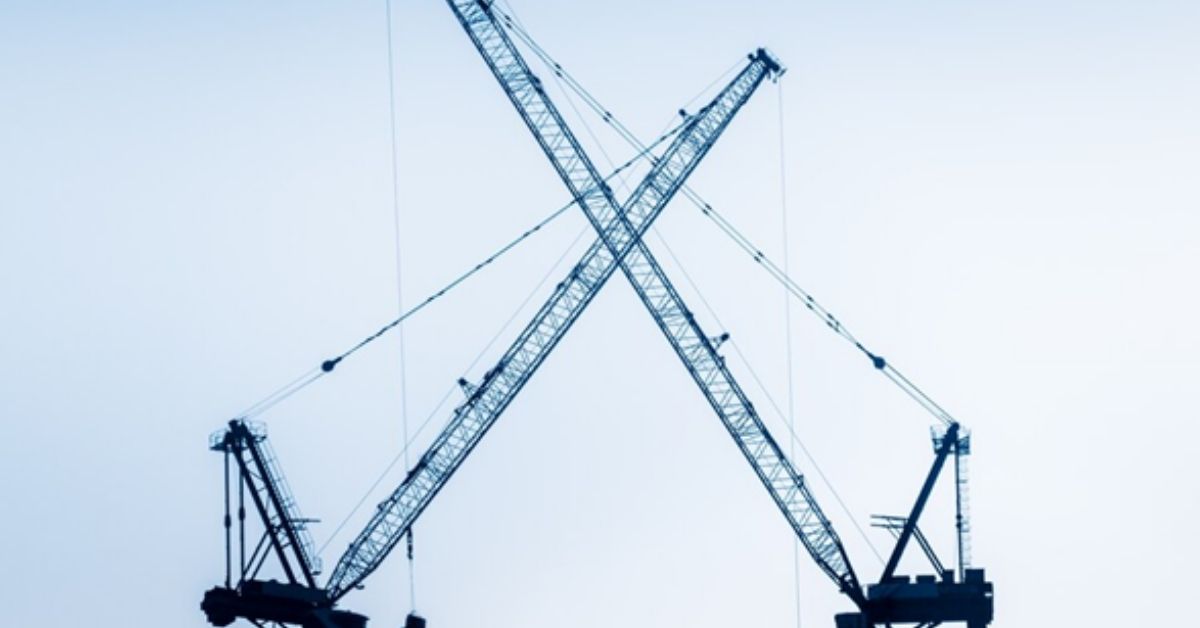Cranes are essential pieces of equipment on construction sites, ports, and industrial facilities. They lift heavy loads, transport materials, and enable large-scale operations to run smoothly. However, cranes are complex machines subject to significant wear and tear, and if not properly maintained, they can pose serious safety risks. Crane malfunctions or accidents can lead to catastrophic consequences, including injury, fatalities, property damage, and costly delays. That’s where crane inspection comes in — they play a vital role in ensuring the safe and efficient operation of cranes.
In this blog, we’ll explore how regular crane inspections help prevent accidents and malfunctions, highlighting their importance in safeguarding workers, improving equipment longevity, and maintaining operational efficiency.
Why Crane Inspections Are Critical
Cranes operate in challenging environments where they are exposed to various stressors, including heavy loads, harsh weather conditions, and continuous use. Over time, parts of the crane can degrade, leading to potential safety hazards. Regular crane inspections are crucial because they:
- Identify hidden defects or wear: Even though a crane may appear to be in good working condition on the surface, there may be underlying issues that are not immediately visible. Inspections allow professionals to identify hidden defects in key components such as cables, hydraulics, and the crane structure itself.
- Prevent small issues from escalating: Without regular inspections, minor problems like worn-out bearings, loose bolts, or damaged cables can go unnoticed until they cause major failures. Regular checks help catch these issues early, before they lead to breakdowns or accidents.
- Ensure compliance with safety regulations: In many countries, including Australia, crane inspections are not just good practice—they are legally required. Work Health and Safety (WHS) regulations and Australian Standards mandate regular crane inspections to ensure compliance with safety guidelines.
How Crane Inspections Prevent Accidents
Accidents involving cranes are often catastrophic, resulting in property damage, equipment loss, or, worst of all, injury or loss of life. Regular crane inspections play a significant role in preventing such accidents by addressing potential safety risks before they lead to disaster. Here are some of the ways crane inspections contribute to safety:
1. Detecting Structural Damage
Crane components, including the boom, tower, chassis, and jib, are constantly under stress, particularly when lifting heavy loads. Over time, these components can suffer from fatigue, cracking, or deformation, leading to catastrophic failures.
Regular inspections ensure that the structural integrity of the crane is evaluated frequently. This includes checking for:
- Cracks or fractures in the crane’s frame
- Worn-out welds or bolts
- Any distortion in critical components
Catching these issues early ensures that repairs are made before a structural failure occurs, preventing the crane from collapsing or breaking under load, which could cause severe accidents.
2. Monitoring Hoisting and Lifting Mechanisms
The hoisting mechanism is responsible for lifting heavy loads, which are typically the most significant risk factor for crane accidents. If the crane’s winches, chains, or pulleys are damaged or malfunctioning, there’s a real risk that the load could fall, leading to serious injury or even fatalities.
Routine inspections of the hoisting equipment can help detect:
- Frayed or damaged cables
- Worn-out hooks or lifting slings
- Hydraulic or pneumatic issues in the lifting mechanism
Ensuring that these components are in top condition can dramatically reduce the risk of equipment failure during lifting operations.
3. Identifying Hydraulic Failures
Many modern cranes use hydraulic systems to manage the crane’s movements and lifting capabilities. Hydraulic fluid leaks, pressure loss, or component wear can lead to malfunctions and accidents. Cranes rely on these hydraulic systems to function smoothly, and failure can result in the crane losing control over its movements.
Regular inspections of the crane’s hydraulic systems allow inspectors to check:
- Hydraulic fluid levels
- Hoses and connections for leaks
- Valve and pump functionality
Ensuring the hydraulic system is properly maintained helps prevent the possibility of sudden, unplanned movements or malfunctions.
4. Preventing Electrical Failures
Cranes also rely on electrical systems to control movements, lights, and safety features. If the electrical system is faulty, it can cause malfunctions such as:
- Loss of control over crane movements
- Inadequate lighting, which can increase the risk of accidents in low visibility
- Faulty safety systems like limit switches or overload indicators
An inspection of the crane’s electrical components, including wiring, fuses, and safety features, ensures that the crane will operate safely in all conditions.
How Crane Inspections Prevent Malfunctions
In addition to preventing accidents, crane inspections are essential in preventing equipment malfunctions. These malfunctions can lead to operational downtime, costly repairs, and disruption of work, all of which have significant financial implications. Here’s how inspections contribute to reducing malfunctions:
1. Prolonging Equipment Life
Cranes are expensive assets, and maintaining their functionality is key to maximizing their lifespan. Regular inspections ensure that small issues are addressed before they escalate into bigger problems that require costly repairs or even full replacements. By replacing worn-out components, lubricating parts, and making necessary adjustments during inspections, you can extend the lifespan of your crane and avoid costly repairs or replacement expenses.
2. Reducing Unexpected Downtime
Cranes are critical for operations on construction sites, manufacturing plants, and other heavy industries. Unexpected breakdowns can cause significant delays and disruptions. A crane that is out of service for maintenance or repairs can result in lost time and productivity. Regular inspections help identify potential issues early, allowing for preventive maintenance that reduces the likelihood of sudden breakdowns and ensures the crane is always ready for use.
3. Optimizing Performance
Cranes that are not properly maintained can experience reduced performance, including slower lifting speeds, inefficient fuel consumption, or difficulty with maneuvering. Regular inspections help optimize performance by ensuring that all systems are functioning as they should. Properly maintained cranes perform more efficiently, resulting in smoother operations and improved productivity.
What Happens During a Crane Inspection?
A typical crane inspection covers a range of essential areas, and inspections can be broken down into daily, monthly, and annual checklists:
- Daily inspections: Operators check the crane’s key components before each shift, including the hooks, load lines, controls, and safety features. They will also perform visual checks for any obvious signs of damage or wear.
- Monthly inspections: A more thorough inspection is conducted by a qualified technician, including checks for proper lubrication, hydraulic fluid levels, and any signs of wear in the crane’s components.
- Annual inspections: A comprehensive inspection is performed, often by a third-party inspector, to assess the crane’s structural integrity, load-bearing capacity, and compliance with safety regulations. This includes checking the crane’s mechanical systems, electrical components, and safety devices.
Conclusion: Preventing Accidents and Malfunctions Through Inspections
Cranes are complex, high-powered machines that perform critical tasks on job sites, and regular inspections are the best way to ensure that they continue to operate safely and efficiently. By detecting issues early, preventing malfunctions, and ensuring compliance with safety regulations, crane inspections play a vital role in preventing accidents, injuries, and costly downtime.
Whether you’re working in construction, logistics, or manufacturing, regular crane inspections are a proactive approach that helps avoid disasters, extends the life of your equipment, and keeps operations running smoothly.
Don’t wait for a malfunction to occur — schedule regular crane inspections to protect your workers, your equipment, and your bottom line.
Also Read: Dodge Ram Truck Clubs on the Western Slope of Colorado



